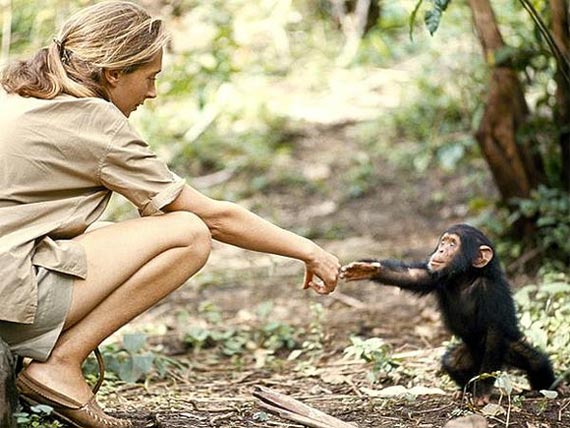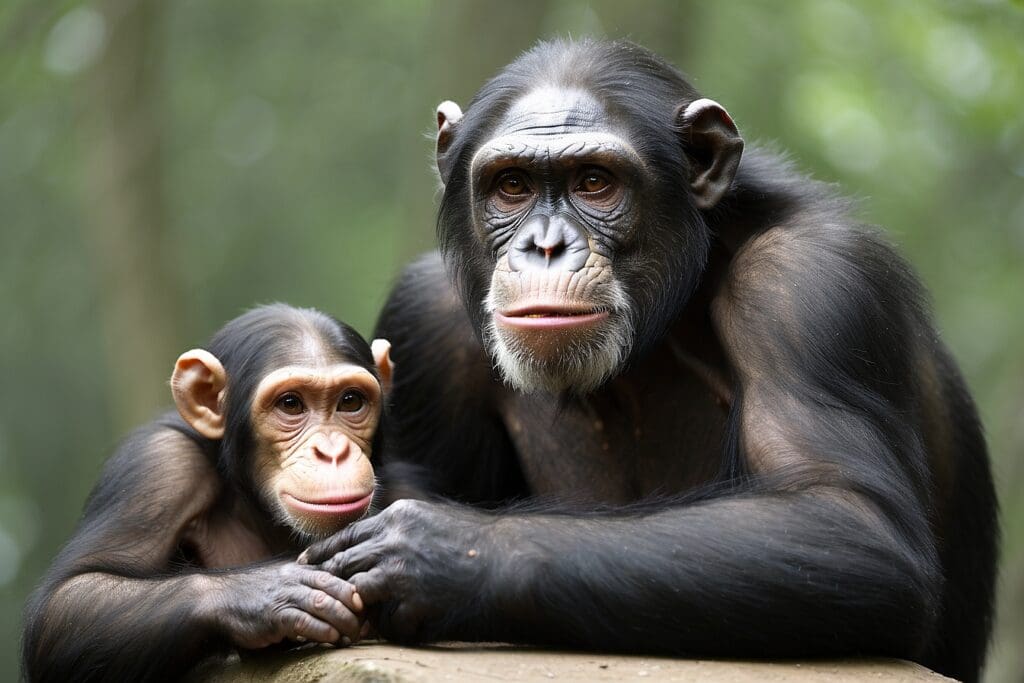Dr. Jane Goodall opened my eyes to the world of chimpanzees, as she did for many people. It was not until I read In the Shadow of Man, in which Goodall recounts her early fieldwork at the Gombe Stream Chimpanzee Reserve in Tanzania, that I realized chimpanzees suffer from many of the same diseases as humans.1 So, how do Chimpanzees cope with disease and what does this mean for human health?
Chimpanzees and Polio
Poliomyelitis, also known as polio, is an example of a common disease for both humans and Chimpanzees. Polio is caused by poliovirus, which invades a person’s brain and spinal cord and causes paralysis. Only about one in four people infected by the poliovirus will have flu-like symptoms, such as a fever, a sore throat, and nausea. These symptoms usually go away on their own in two to five days. However, about one in 25 people with a poliovirus infection will develop meningitis and about one in 200 people with the infection will suffer from paralysis. In some cases, the infection is deadly because it impacts the muscles that control breathing. Only people with suffering from paralysis due to the poliovirus infection are considered to have “polio.” Polio is very easily spread via coming into contact with the feces of an infected person or, less common, coming into contact with the droplets of a sneeze or cough of an infected person.2
Dr. Goodall first observed a chimpanzee polio epidemic in the fall of 1966. She describes this in her book, In the Shadow of Man: “I think those months were the darkest I have ever lived through: every time a chimp stopped visiting the feeding area, we started to wonder whether we would ever see him again or, worse, if he would reappear hideously crippled.” Goodall and her team eventually tracked the infection to two human victims in a nearby village. At the time, Goodall was pregnant and had not received all of her polio vaccinations, so the news was very worrisome.3
Dr. Goodall’s field observations gave insight into how chimpanzees actually dealt with living with polio, since losing the ability to use limbs is devastating to a chimp’s lifestyle. One particular male chimp ended up with paralyzed legs and therefore had to adapt his walking; he would grab on to tufts of long grass or tree roots to then propel himself forward in a somersaulting fashion. However, as the paralysis spread over his body, he eventually could not feed himself anymore and passed away. Goodall also noticed that healthy chimpanzees exhibited signs of fear when they encountered a newly paralyzed chimpanzee and they subsequently kept their distance. Grooming is a large part of the chimpanzee lifestyle, and unfortunately the chimpanzees inflicted with polio were no longer including in this social and hygienic activity.4
 5
5
Photo source:Ebola virus disease ![]() after the United States experienced its first cases diagnosed on its own soil during the fall of 2014.6 Ebola first appeared in 1976 in two simultaneous outbreaks – one in Sudan and one in the Democratic Republic of Congo. It is believed that the original hosts of the Ebola virus are fruit bats. Since Ebola is spread through contact with the blood, secretions, and organs of infected animals, the virus easily spread from fruit bats to other animals, such as chimpanzees, gorillas, forest antelope, and porcupines. Healthcare workers believe that eating bush meat (such as chimpanzees) and close contact with the deceased during burial ceremonies are two ways that Ebola spread from animals to humans and then human to human. It is difficult to distinguish Ebola from malaria, typhoid fever, and meningitis since all of these diseases have many of the same symptoms, such as vomiting and diarrhea.7
after the United States experienced its first cases diagnosed on its own soil during the fall of 2014.6 Ebola first appeared in 1976 in two simultaneous outbreaks – one in Sudan and one in the Democratic Republic of Congo. It is believed that the original hosts of the Ebola virus are fruit bats. Since Ebola is spread through contact with the blood, secretions, and organs of infected animals, the virus easily spread from fruit bats to other animals, such as chimpanzees, gorillas, forest antelope, and porcupines. Healthcare workers believe that eating bush meat (such as chimpanzees) and close contact with the deceased during burial ceremonies are two ways that Ebola spread from animals to humans and then human to human. It is difficult to distinguish Ebola from malaria, typhoid fever, and meningitis since all of these diseases have many of the same symptoms, such as vomiting and diarrhea.7
The most recent Ebola outbreak began in March of 2014, but this time in West Africa. This particular strain of Ebola has been known of since 1995 and has killed thousands of chimpanzees over the past two decades. In May 2014, researchers announced that a live, oral Ebola vaccine for chimps had been created. However, the vaccine needs to be tested before it can be administered to wild chimpanzees and biomedical research on chimpanzees is currently in decline. Debora MacKenzie of NewScientist stated, “Talk about ironic. Wild chimpanzees may end up in more danger from the Ebola virus because of cuts in research intended to protect their captive fellows.”8 It is still unclear if this vaccine will be able to be used, but many believe that administering vaccines to wild chimpanzee populations would decrease the incidence of human Ebola cases.9
Knowing that chimpanzees suffer from diseases such as Ebola and polio, and that these diseases can be passed back and forth between species, including humans, is a strong reminder that humans are indeed part of ecosystems. Whether we like it or not, because we are susceptible to many of the same environmental factors as animals, such as infectious disease and lack of freshwater, our actions do indeed impact animals and their actions impact us.





